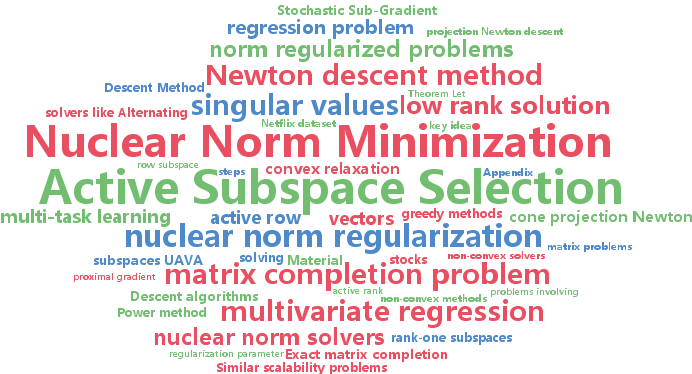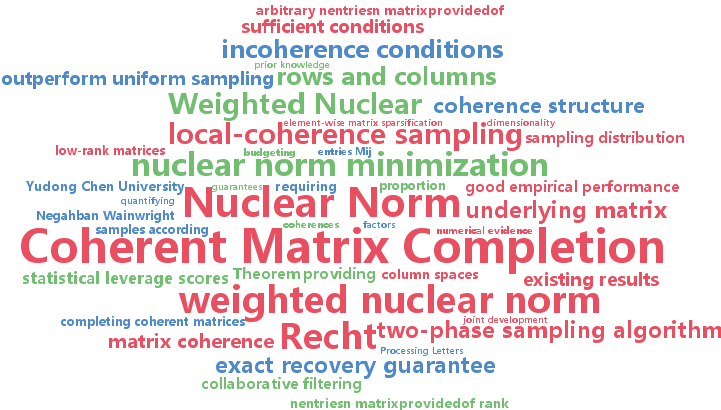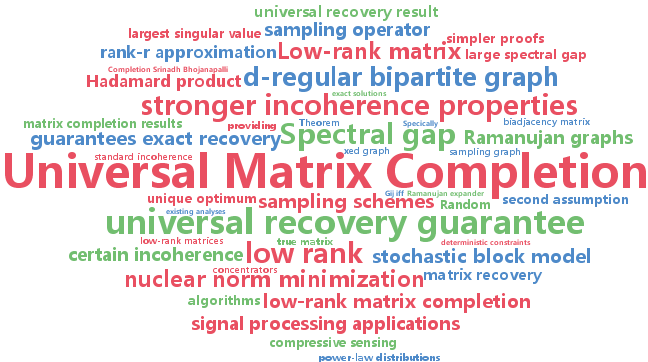nuclear norm minimization
-
Cho-Jui Hsieh and Peder Olsen
Nuclear Norm Minimization via Active Subspace Selection (pdf)
We describe a novel approach to optimizing matrix problems involving nuclear norm regularization and apply it to the matrix completion problem. We combine methods from non-smooth and smooth optimization. At each step we use the proximal gradient to select an active subspace. We then find a smooth, convex relaxation of the smaller subspace problems and solve these using second order methods. We apply our methods to matrix completion problems including Netflix dataset, and show that they are more than 6 times faster than state-of-the-art nuclear norm solvers. Also, this is the first paper to scale nuclear norm solvers to the Yahoo-Music dataset, and the first time in the literature that the efficiency of nuclear norm solvers can be compared and even compete with non-convex solvers like Alternating Least Squares (ALS).
-
Yudong Chen and Srinadh Bhojanapalli and Sujay Sanghavi and Rachel Ward
Coherent Matrix Completion (pdf)
Matrix completion concerns the recovery of a low-rank matrix from a subset of its revealed entries, and nuclear norm minimization has emerged as an effective surrogate for this combinatorial problem. Here, we show that nuclear norm minimization can recover an arbitrary $n \times n$ matrix of rank r from O(nr log^2(n)) revealed entries, provided that revealed entries are drawn proportionally to the local row and column coherences (closely related to leverage scores) of the underlying matrix. Our results are order-optimal up to logarithmic factors, and extend existing results for nuclear norm minimization which require strong incoherence conditions on the types of matrices that can be recovered, due to assumed uniformly distributed revealed entries. We further provide extensive numerical evidence that a proposed two-phase sampling algorithm can perform nearly as well as local-coherence sampling and without requiring a priori knowledge of the matrix coherence structure. Finally, we apply our results to quantify how weighted nuclear norm minimization can improve on unweighted minimization given an arbitrary set of sampled entries.
-
Srinadh Bhojanapalli and Prateek Jain
Universal Matrix Completion (pdf)
The problem of low-rank matrix completion has recently generated a lot of interest leading to several results that offer exact solutions to the problem. However, in order to do so, these methods make assumptions that can be quite restrictive in practice. More specifically, the methods assume that: a) the observed indices are sampled uniformly at random, and b) for every new matrix, the observed indices are sampled \emph{afresh


